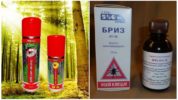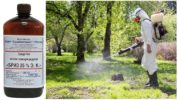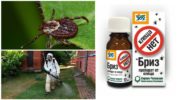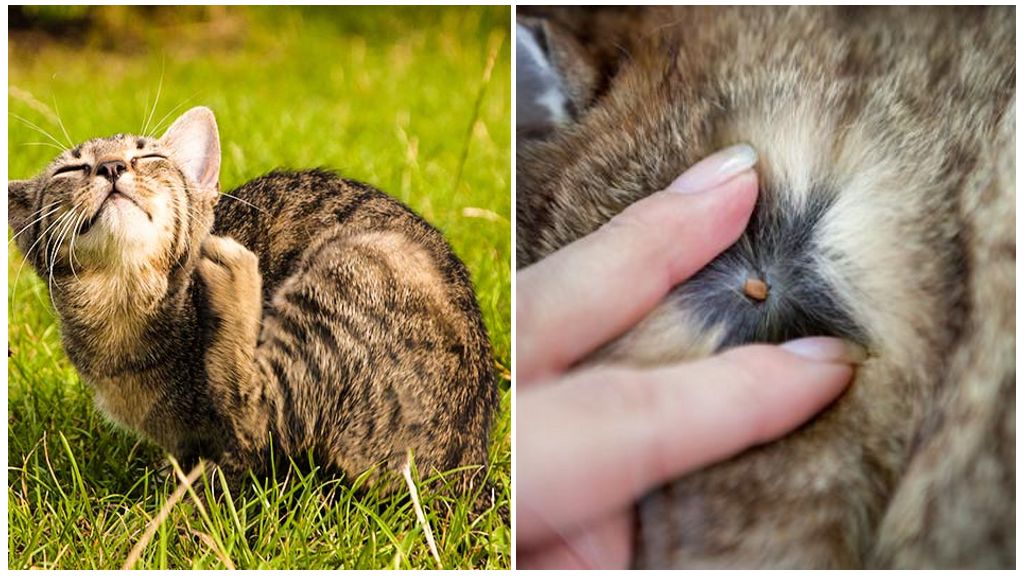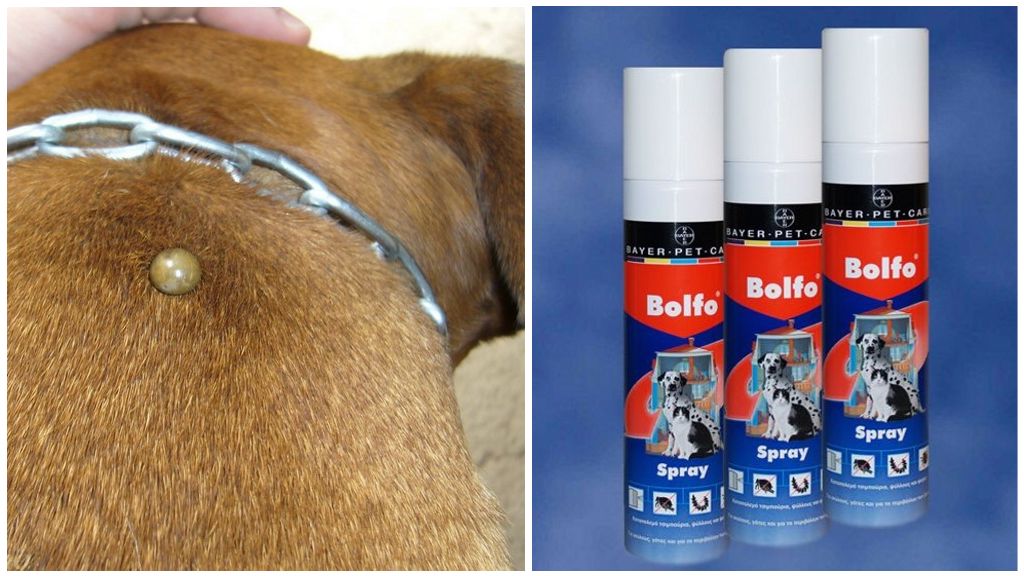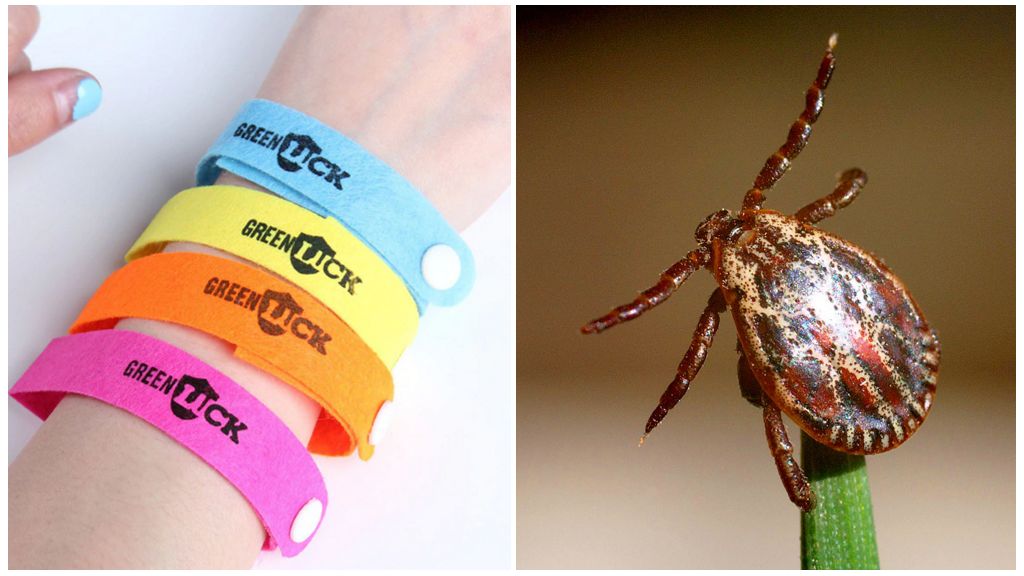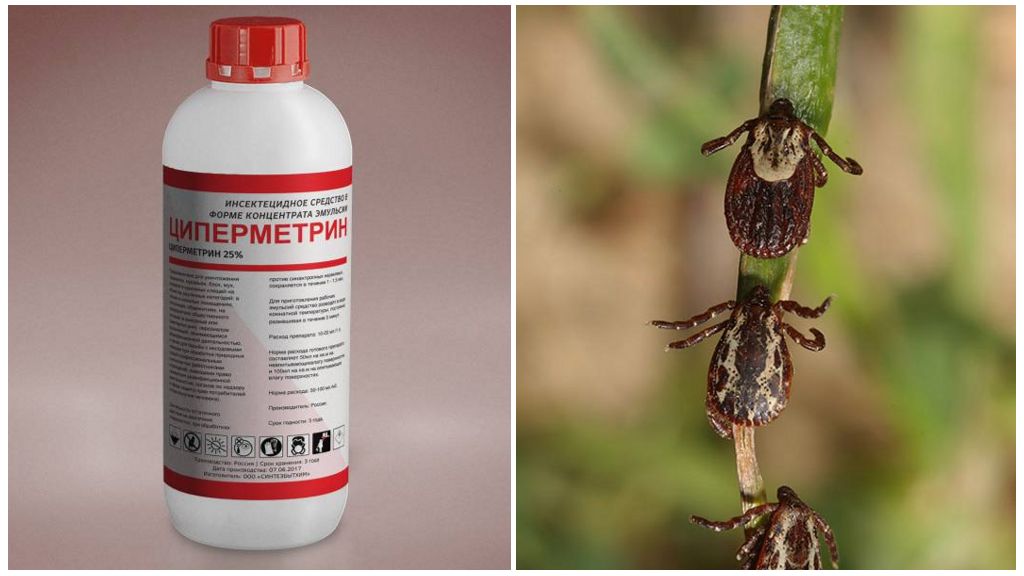- Means Breeze and tick mite
- Tick Breeze Remedy
- Tick Breeze Remedy
Among the many repellents of foreign manufacture, one powerful agent stands out, which is not suitable for use in a normal environment. Antisex Breeze is a drug, the development of which was started back in the Soviet years. Work was stopped due to the collapse of the country, and only in 2006 the drug was officially registered.
Benefits of Breeze Anticlesch
When developing the tool, scientists were tasked with: creating reliable protection against the vulture and ticks for army special forces. The drug had the same effect on parasites throughout the country. The task is difficult, since even populations of the same species can produce different reactions to the drug.
A good “Crimean” repellent can only half protect a person from parasites in the Far East. And vice versa. A similar problem exists with foreign repellents. Different types of ticks can also be more or less resistant to any acaricide.
But Spetsbioservice LLC managed to resolve this issue. Due to the concentration of the product in an aerosol can. Breeze Antiklesch kills 100% of ticks, but it can not be applied to unprotected skin, only to clothing.
On a note!
This tool is used in mite suits. Tick traps are treated with special traps made on the legs and sleeves of the suit. Once in this trap, the parasite dies.
The spray Breeze produces an anti-mite LLC Tyumen Aerosols. The tool is available in two types:
- Deta-prof with an acaricide content of 30%;
- Breeze Antiklesche with the active substance content of 70%.
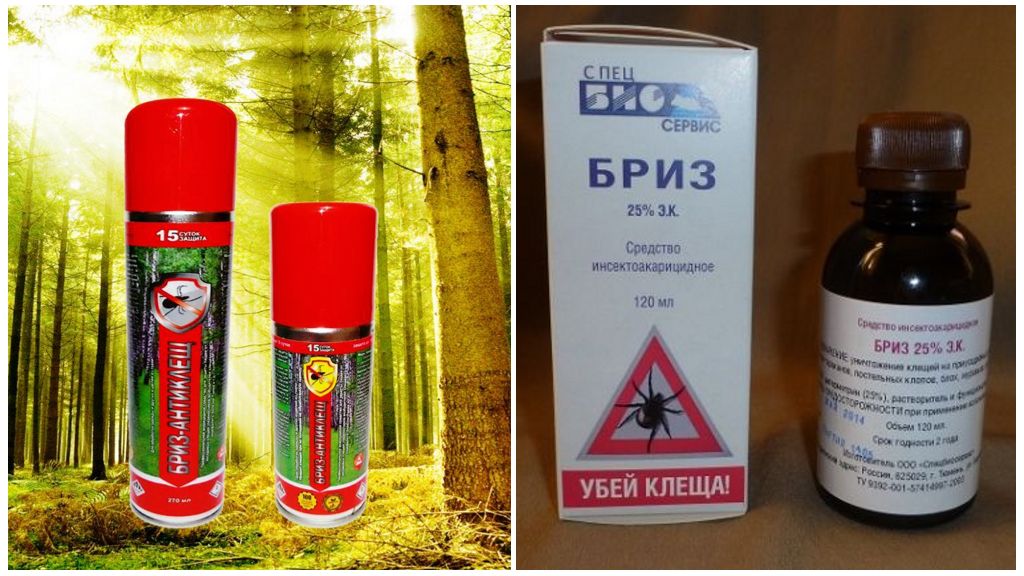
A larger amount of acaricide does not fit into the can because of the need for gas, which will push the liquid out of the can.
Release the product in cans of 140 and 500 ml. The cost in Moscow for a small spray can is from 270 rubles, for a large spray - from 560 rubles.
Composition Breeze Antiklesche
The main ingredient in the contents of aerosol cans is alpha-permethrin from the permethrin group. The percentage of alfacipermethrin is 65-70%. The remaining components are substances without which the aerosol spray will not work and the flavor:
- isopropyl alcohol;
- hydrocarbon propellant;
- a perfume masking the smell of cypermethrin and giving the product a pleasant aroma.
The shelf life of the product is 3 years from the date of issue.
Use of funds
Instructions for use are very simple. The can is previously shaken several times. The clothes and equipment are laid out and carefully sprayed with the preparation until the fabric is slightly moistened. The estimated spraying time is 20 seconds per 1 m² of clothing. Since clothes are not a square piece of fabric, it’s easier to focus on moisturizing.
When spraying, special attention is paid to places where mites fall first of all: legs and sleeves. When using a tick-borne suit, the Breeze Anticlet is applied to traps in a larger amount than the rest of the suit.
On a note!
The validity of funds applied to clothing is from 5 to 15 days.
Breeze for the territory
Spetsbioservice LLC also produces ticks for treating the area. Often it is used for spraying forests. But the Breeze goes on sale in small packaging made of glass or plastic;
- 0.5 l;
- 1 liter;
- 5 l
On containers there is a hazard marking for bees (I class) and for fish (class P).
Breeze has a 25% long duration. On flying insects, it acts for 1-4 weeks in the open. On the premises, the validity period is longer: 1-4 months. The duration of action depends on the concentration of the working solution and the type of surfaces to be treated. But for ticks, the exposure time of the poisonous substance is 2 times shorter.
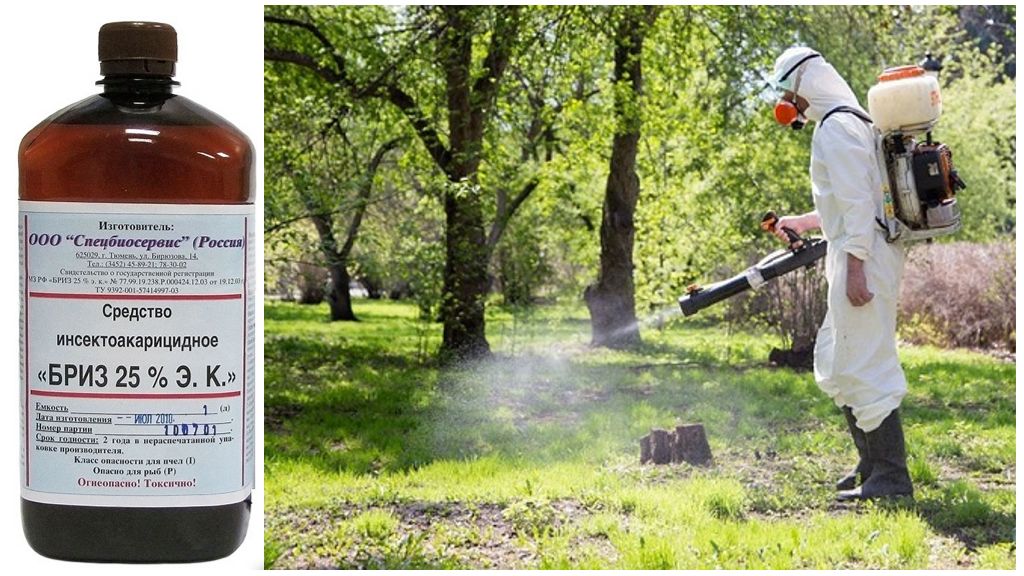
In relation to warm-blooded organisms, the breeze poisoning ability is indicated as moderately dangerous. A certain danger is the product when ingested through the mouth or by inhalation of a finely divided 0.1% aerosol. The inhalation effect of a solution with this concentration is assigned to the second hazard class. The likelihood of poisoning through the skin is unlikely. According to this method, the tool is classified as low hazard.
Important!
These data relate to working solutions, not concentrated emulsions.
Composition
This is an analogue of another remedy for ticks and sinuses of Cypermethrin. The composition of the breeze intended for processing the territory:
- cypermethrin - 25%;
- solvents;
- synergist;
- emulsifier (emulsion stabilizer).
Synergists are substances that increase the toxicity of pesticides, but are not poisons. Due to the presence of synergists, working solutions contain 0.01-0.05% cypermethrin.
On a note!
The shelf life of the working solution is 6 hours.
Instructions for use
Prepare a working solution before use. The Breeze is mixed with filtered water and mixed for 5 minutes. The finished solution is poured into a spray bottle and sprayed on the ground. The consumption of funds per 1 ha is not more than 400 ml. An overdose of Breeze is unacceptable. When spraying, use special clothing and take precautions.
Since the main use of the product is forest expanses on an industrial scale, the safety equipment for Breeze was developed taking into account these nuances. Minors and pregnant women are not allowed to work with the drug.
Important!
A drug that does not have a passport is prohibited for use.
When working with the tool, personal protective equipment is needed:
- overalls from dense or water-repellent fabric;
- latex gloves;
- tight glasses "monoblock";
- respirator with gas mask or gas mask.
On a note!
The respirator should fit snugly to the face without squeezing soft tissue. If the smell of the drug is felt in the respirator, this is a signal of the need to replace the gas cartridge.
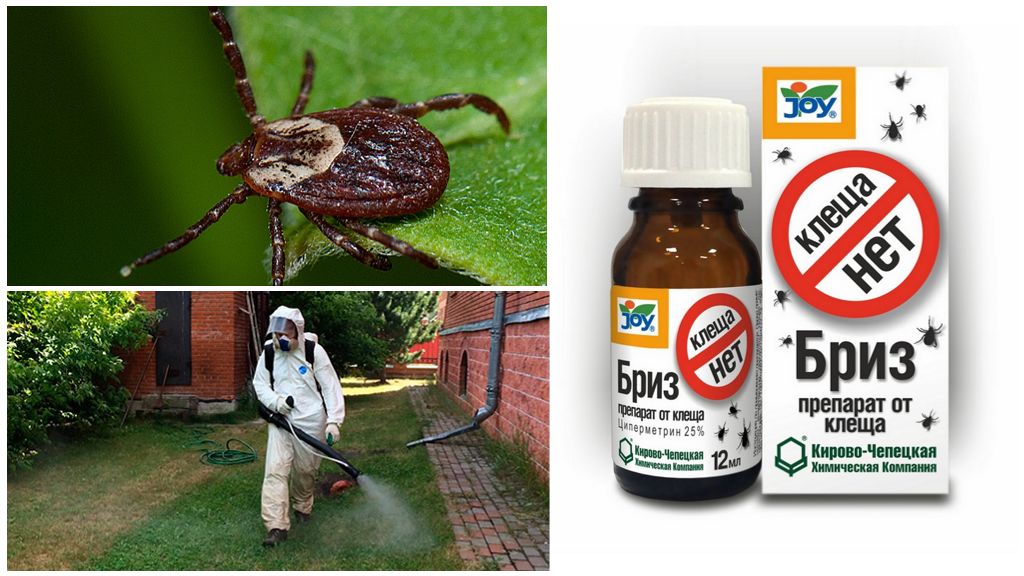
After use, the rubber parts of the respirator are thoroughly washed and dried. Overalls are removed and aired. Wash as dirty or once a week in a soda solution. Spraying can be no more than 6 hours a day with a break of 15 minutes every hour.
Although rare, in reviews of Breeze there are sometimes complaints of malaise after processing.
Symptoms of poisoning and first aid
With systematic spraying with a Breeze, sooner or later, the product will get into the eyes or skin. In this case, the eyes are washed with water. Drops of funds from the skin are carefully removed with cotton wool, without rubbing, and washed the affected area with soap and water. Worse if the drug is ingested. In this case, intoxication occurs. Symptoms of cypermethrin poisoning:
- vomiting
- bad taste in the mouth;
- nausea aggravated by eating or smoking;
- weakness;
- headache;
- salivation;
- respiratory irritation;
- abdominal pain.
With food poisoning, vomiting is primarily caused. To do this, drink a few glasses of water. After vomiting, drink a solution of baking soda 2%. The second option: 10-15 tablets of activated carbon with a couple of glasses of water.If a person faints, they turn him on his side, call for emergency help and take no more measures. The treatment for Breeze poisoning is symptomatic.
Reviews
I use means for treatment of the site from ticks and other bloodsuckers in his country house. I don’t have a special suit. I use a shirt with long sleeves and trousers. I wrap my head and neck with a scarf. But the glasses and a respirator had to be purchased after the first time I felt a burning sensation in my throat, and then nausea. I didn’t refuse to use, as it is the best tick remedy of all that I know.
Natalya Semenova, Lugansk
We have been using Breeze Antiklesch for several years on field trips. It is really good for areas with a lot of bloodsuckers and reliably protects against tick bites. But in city life, I would not recommend using it, otherwise even in the summer you will have to go completely wrapped in clothes. Moreover, between the treated clothes and the body there should still be a layer so that the pesticide does not come into contact with the clothes.
Andrey Kryuchok, St. Petersburg
